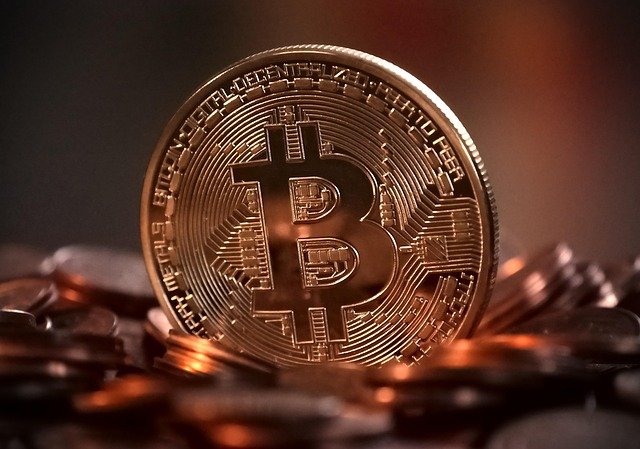Understanding Game Skins Trading: A 2025 Guide to Digital Markets
The world of digital assets, particularly game skins, has evolved into a dynamic marketplace where enthusiasts and traders alike seek to understand its intricate mechanisms. As we look towards 2025, the landscape of virtual item trading continues to adapt to new technologies and market behaviors. This guide aims to demystify the core principles behind game skin valuation, strategic trading practices, and essential security measures for navigating these digital economies. It also explores the potential impact of emerging technologies like NFTs and the metaverse on the future of this unique segment of the gaming industry in Indonesia and globally.

The trading of cosmetic items in video games has transformed from a niche hobby into a sophisticated digital marketplace. Players across Indonesia and globally now participate in buying, selling, and exchanging virtual items that enhance the visual appearance of characters, weapons, and equipment. These transactions occur through official platforms, community marketplaces, and specialized trading websites, creating a complex ecosystem that mirrors traditional commodity markets.
The appeal of these digital cosmetics extends beyond mere aesthetics. Rarity, visual design, historical significance, and cultural trends all contribute to the perceived worth of these virtual items. Some pieces have sold for thousands of dollars, while others remain accessible to casual players. Understanding this market requires knowledge of valuation principles, trading strategies, security protocols, and emerging technologies that continue to reshape how players interact with digital ownership.
What Key Factors Determine the Value of Virtual Cosmetic Items?
The value of digital cosmetic items depends on multiple interconnected factors. Rarity stands as the primary determinant, with limited-edition releases, discontinued items, and low drop rates commanding premium prices. Items from early game versions or special events often appreciate over time due to their irreplaceable nature.
Visual appeal plays a crucial role in valuation. Designs featuring popular color schemes, intricate patterns, or unique animations typically attract higher demand. Community preferences shift over time, influenced by professional players, content creators, and cultural trends within gaming communities.
Condition ratings affect value in games that implement wear systems. Items classified as factory new or minimal wear fetch higher prices than their battle-scarred counterparts. Statistical attributes like pattern indexes or float values can create significant price variations within the same item category.
Market liquidity influences pricing dynamics. Highly traded items maintain stable values with narrow bid-ask spreads, while rare pieces experience volatile pricing due to infrequent transactions. External factors including game updates, tournament events, and developer announcements can trigger sudden market movements.
How Can Traders Develop Effective Strategies for Virtual Item Markets?
Successful trading requires a methodical approach combining market research, risk management, and patience. Traders should begin by specializing in specific game titles or item categories to develop expertise. Deep knowledge of particular markets enables better identification of undervalued assets and emerging trends.
Price tracking tools and historical data analysis help traders identify patterns and optimal buying opportunities. Monitoring multiple marketplaces simultaneously reveals price discrepancies that create arbitrage opportunities. However, transaction fees, trade holds, and platform restrictions must factor into profitability calculations.
Diversification reduces portfolio risk. Rather than concentrating capital in single high-value items, spreading investments across multiple assets protects against sudden devaluations. Balancing liquid items for quick trades with long-term holdings for appreciation creates a robust trading strategy.
Timing significantly impacts returns. Purchasing items during market downturns or immediately after major game updates often yields favorable entry points. Conversely, selling during peak demand periods, tournament seasons, or when specific items gain popularity maximizes profits. Emotional discipline prevents impulsive decisions driven by fear or greed.
What Security Practices Protect Traders on External Trading Platforms?
Navigating marketplaces outside official game platforms requires heightened security awareness. Scams, fraudulent listings, and account compromises pose constant threats to traders. Implementing comprehensive security measures protects both digital assets and financial information.
Two-factor authentication serves as the foundational security layer. Enabling this feature on gaming accounts, email addresses, and trading platforms significantly reduces unauthorized access risks. Authentication apps provide stronger protection than SMS-based codes, which remain vulnerable to interception.
Verifying platform legitimacy before conducting transactions prevents many scams. Established marketplaces with user review systems, escrow services, and dispute resolution mechanisms offer greater protection than informal trading channels. Researching platform reputation through community forums and independent reviews reveals potential red flags.
Direct peer-to-peer trades require extreme caution. Middleman services, while adding fees, provide essential fraud protection. Traders should never click suspicious links, download unknown software, or share login credentials regardless of promised benefits. Common scams include fake trading bots, phishing websites mimicking legitimate platforms, and impersonation schemes.
Regular account security audits help identify vulnerabilities. Reviewing active sessions, checking connected applications, and updating passwords periodically maintains account integrity. Using unique passwords for each platform prevents credential stuffing attacks that compromise multiple accounts simultaneously.
How Are Blockchain Technology and Virtual Worlds Transforming Digital Item Ownership?
Emerging technologies promise fundamental changes to how players own and trade digital cosmetics. Blockchain-based systems enable true ownership verification, cross-platform compatibility, and transparent transaction histories. These innovations address long-standing limitations of traditional centralized systems.
Non-fungible tokens represent individual digital items on blockchain networks, providing verifiable scarcity and ownership records. Unlike traditional systems where developers control item existence, blockchain-based assets exist independently of specific game servers. This persistence creates new possibilities for long-term value retention and cross-game functionality.
Virtual worlds and metaverse platforms integrate gaming cosmetics into broader digital ecosystems. Items purchased in one environment may display across multiple compatible platforms, expanding utility beyond single game titles. This interoperability could revolutionize how players perceive and value digital possessions.
Decentralized marketplaces eliminate intermediary control, potentially reducing fees and increasing transaction transparency. Smart contracts automate trades, ensuring both parties fulfill obligations simultaneously. However, these systems introduce new challenges including transaction irreversibility, technical complexity, and regulatory uncertainty.
The integration of these technologies faces obstacles including environmental concerns related to blockchain energy consumption, user experience challenges, and resistance from traditional gaming companies protecting existing revenue models. Regulatory frameworks continue evolving to address taxation, consumer protection, and legal ownership questions surrounding digital assets.
What Practical Considerations Should New Traders Understand?
Entering virtual item markets requires realistic expectations and foundational knowledge. New traders should start with modest investments while learning market dynamics. Paper trading or tracking hypothetical transactions helps develop skills without financial risk.
Understanding platform-specific rules prevents costly mistakes. Trade holds, regional restrictions, and payment method limitations vary across marketplaces. Reading terms of service and community guidelines clarifies permitted activities and potential account penalties.
Tax implications of trading activity depend on local regulations. In many jurisdictions, profits from virtual item sales constitute taxable income. Maintaining transaction records facilitates accurate reporting and compliance with financial regulations. Consulting tax professionals familiar with digital asset taxation provides personalized guidance.
Market participation carries inherent risks including total loss of invested capital. Virtual item values can plummet due to game updates, developer decisions, or shifting player preferences. Traders should never invest funds needed for essential expenses and must recognize that past performance does not guarantee future returns.
The virtual cosmetics market continues maturing, offering both opportunities and challenges for participants. By understanding valuation factors, implementing sound trading strategies, maintaining rigorous security practices, and staying informed about technological developments, traders can navigate this dynamic landscape more effectively. As digital ownership concepts evolve and new technologies emerge, the intersection of gaming and commerce will likely expand, creating additional avenues for player engagement with virtual economies.




